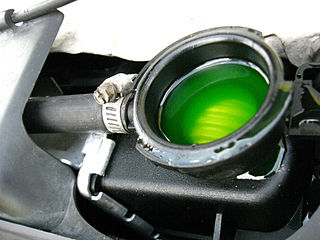by Chuck Pokorny – Guest writer
As school ends and summer begins, many Central Florida drivers will take to the highways in search of cooler temperatures and family fun. But before you hit the open road, it’s a smart idea to ensure your car is in good repair, that its maintenance schedule is current and that you’re ready to drive safely. This simple checklist will help you cruise with ease this summer.
1. Fill up on fluids. Start with a step that’s simple even for car care novices – checking the fluids. Your owner’s manual is the ideal resource for locating gauges and confirming the right amount of engine oil; coolant; and brake, transmission, windshield wiper and power-steering fluids. Keep the gas tank full, as well. When levels fall below a quarter of a tank, the gasoline doesn’t stay cool enough as it flows into the fuel pump —which can lead to pump failure.
2. Make time for maintenance. When planning your trip, make an appointment with a trusted auto technician for a thorough vehicle checkup. Your car may need an oil change, tune-up or just an inspection of key parts such as the battery or belts and hoses. Be sure to ask the technician to examine your brakes, paying careful attention to the linings, rotors and drums. It’s also a good idea to test your windshield wipers and lights, so the shop can replace blades or bulbs that aren’t working properly. Many drivers forget about these smaller auto parts. But when you’re caught in a summer thunderstorm, you’ll be glad you didn’t.
3. Kick the tires. We’ve all seen families stranded on the side of the road changing a tire in the hot sun. To avoid this sticky situation, check your tires for wear, looking closely for bulges, bald spots and uneven surfaces. Tire pressure is just as critical. In fact, the most common cause of blowouts and tire failure is inadequate inflation. You can find the manufacturer’s suggested tire pressure in your owner’s manual or printed on the inside of the driver’s door. In addition to improving safety, the right tire pressure results in less friction and better fuel efficiency. According to the U.S. Department of Energy, correct tire inflation can improve gas mileage by more than 3 percent.
4. Pack light. When loading the trunk, keep your tires and fuel efficiency in mind — both can be damaged by excess cargo. Your tires are calibrated to handle specific weight limits. Overloading them can result in premature wear. And the heavier your car’s burden, the lower your gas mileage with each start from a stoplight or standstill. Securing items to the vehicle’s roof also increases fuel consumption by adding to wind resistance.
5. Drive responsibly. As you hit the open road, be kind to your car by maintaining a consistent speed. If driving conditions and speed limits allow, use cruise control to travel at 60 miles per hour on the highway and avoid wasting gas. U.S. Department of Energy studies show that for each 5 miles per hour over 60, drivers pay the equivalent of about 30 cents more per gallon.
Finally, if you haven’t yet found a skilled, qualified auto technician you trust, now is the perfect time. Dealerships typically have technicians that are specifically trained in servicing your vehicle. The right technician can help keep you maintain your car this summer and in the seasons beyond.
Chuck Pokorny is an instructor at Universal Technical Institute’s Orlando campus, a leading educator for entry-level professional automotive, diesel, collision repair, motorcycle and marine technicians.



